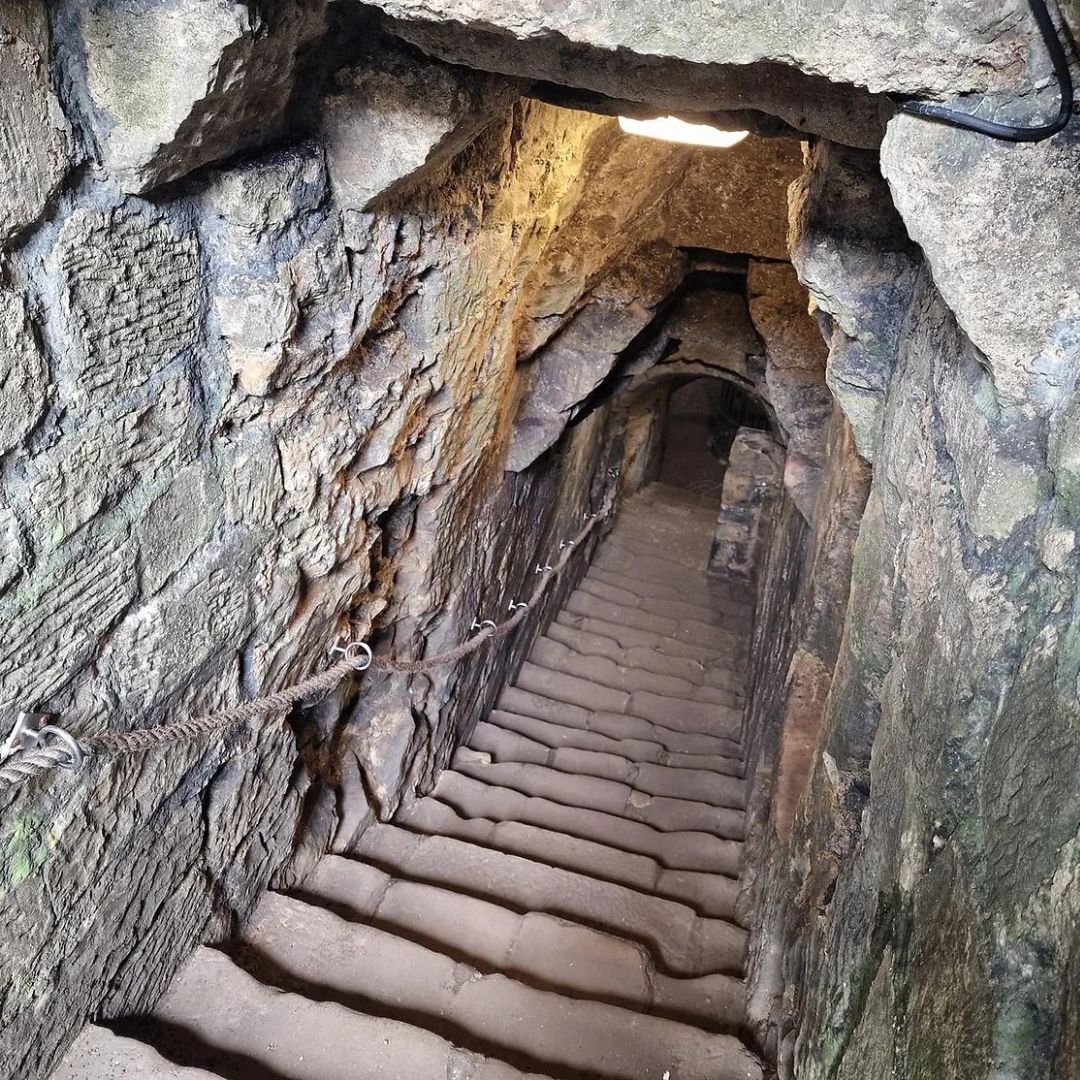The Underground Dungeons of Pontefract Castle
Pontefract Castle in Yorkshire was one of the most terrifying castles in the whole of Early Modern England - and it had eerie underground dungeons.
Located in the historic market town of Pontefract, from its construction in 1070 to its demise following the Civil Wars, the once-fearsome fortress dominated Yorkshire and beyond.
This castle witnessed some of England’s most momentous historical events, earning itself the name of the Key to the North!
The picture shown above shows stairs leading to the underground dungeons under the historic landmark.
The purpose of this medieval dungeon was to detain prisoners.
The dungeons were dark, damp, and dirty, and were not meant to be comfortable places.
Prisoners were usually kept in chains or locked in cages, and they were often subjected to torture.
One of the most infamous moments in Pontefract Castle’s history came in 1399, when Henry IV, a Lancastrian, used it to imprison and murder the deposed King Richard III.
He is believed to have died there, possibly of starvation, perhaps on Valentine’s Day, 14 February 1400.
With the accession of the Lancastrians to the throne, Pontefract quickly began to hold a key position in the north of England, growing in size and importance whilst other castles nearby dwindled.
Pontefract remained a Lancastrian stronghold during the Wars of the Roses.
Its underground dungeons were not originally constructed for imprisonment, but were gradually converted into holding cells for the castle's many captives over the centuries.
The dungeons are composed of a series of interconnected underground chambers.
These chambers vary in size and purpose, from small, cramped cells to more extensive, multi-room areas.
The narrow, winding passages create an eerie and disorienting environment.
The dungeons are carved out of the local sandstone, which not only gives them a distinctive appearance but also contributes to their chilly and damp atmosphere.
The moisture-laden air and lack of sunlight create an unsettling ambiance.
One of the most iconic features of the dungeons is the infamous "black hole."
This well-like pit served as both a source of water and a place of punishment for inmates.
Prisoners were sometimes lowered into the pit as a form of torture or left to languish in its pitch-black depths.
The lack of natural light within the dungeons is perhaps the most haunting aspect.
Torchlight and candles were the only sources of illumination, casting eerie and flickering shadows on the cold, damp walls.
It's said that prisoners suffered greatly within these dungeons.
Torture methods were employed, and the conditions themselves were a form of torment.
The claustrophobic, dark, and damp environment would have been psychologically distressing for anyone held within.
Today, guided tours of the dungeons are available to the public.
They provide a sobering experience that transports you back in time, inviting you to contemplate the lives and fates of those who were once confined within these subterranean depths.
One of the most fascinating aspects for visitors are the so-called ‘Magazine Tours’ which take people underground to view the castle’s notorious cellars and dungeons.
They also guide you through the writing and names scratched onto the walls by the unfortunate prisoners.
The tour involves going underground via steep steps with low light levels, uneven ground, and damp conditions - so sensible footwear is recommended.
The castle is open daily from April to September. Be sure to leave time to explore the extensive grounds.
If you enjoyed this blog post, please follow Exploring GB on Facebook for daily travel content and inspiration.
Don't forget to check out our latest blog posts below!









